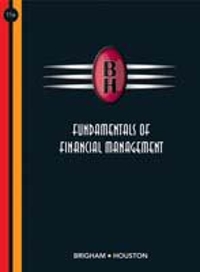Question
Consider the following five series of cash flows which are assumed to occur at the end of each year: Year Stream #1 Stream #2 Stream
Consider the following five series of cash flows which are assumed to occur at the end of each year:
| Year | Stream #1 | Stream #2 | Stream #3 | Stream #4 | Stream #5 |
| 1 | 9,600 | 250 | 2,000 | 5,000 | 100 |
| 2 | 100 | 750 | 2,000 | 3,000 | 100 |
| 3 | 100 | 1,000 | 2,000 | 1,000 | 100 |
| 4 | 100 | 3,000 | 2,000 | 750 | 100 |
| 5 | 100 | 5,000 | 2,000 | 250 | 9,600 |
Part 1: Calculate the present value of each cash flow stream, assuming an interest rate of 7%.
Part 2: Calculate the future value, as of the end of the final year, of each cash flow stream, assuming an interest rate of 7%.
Part 3: The total of each column in the above table is $10,000. Why are the present values and the future values calculated in parts 1 and 2 above not equal to each other? Provide a short explanation of the concept being demonstrated by this scenario.
Step by Step Solution
There are 3 Steps involved in it
Step: 1

Get Instant Access to Expert-Tailored Solutions
See step-by-step solutions with expert insights and AI powered tools for academic success
Step: 2

Step: 3

Ace Your Homework with AI
Get the answers you need in no time with our AI-driven, step-by-step assistance
Get Started


